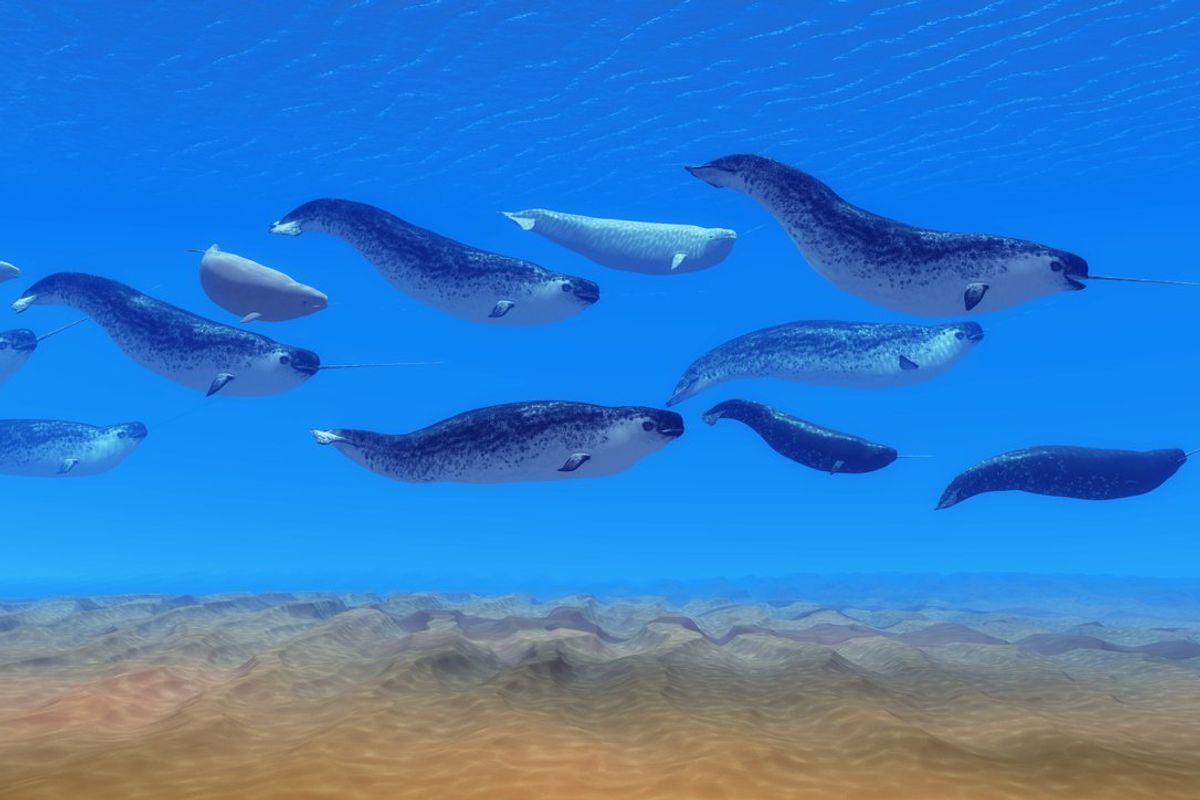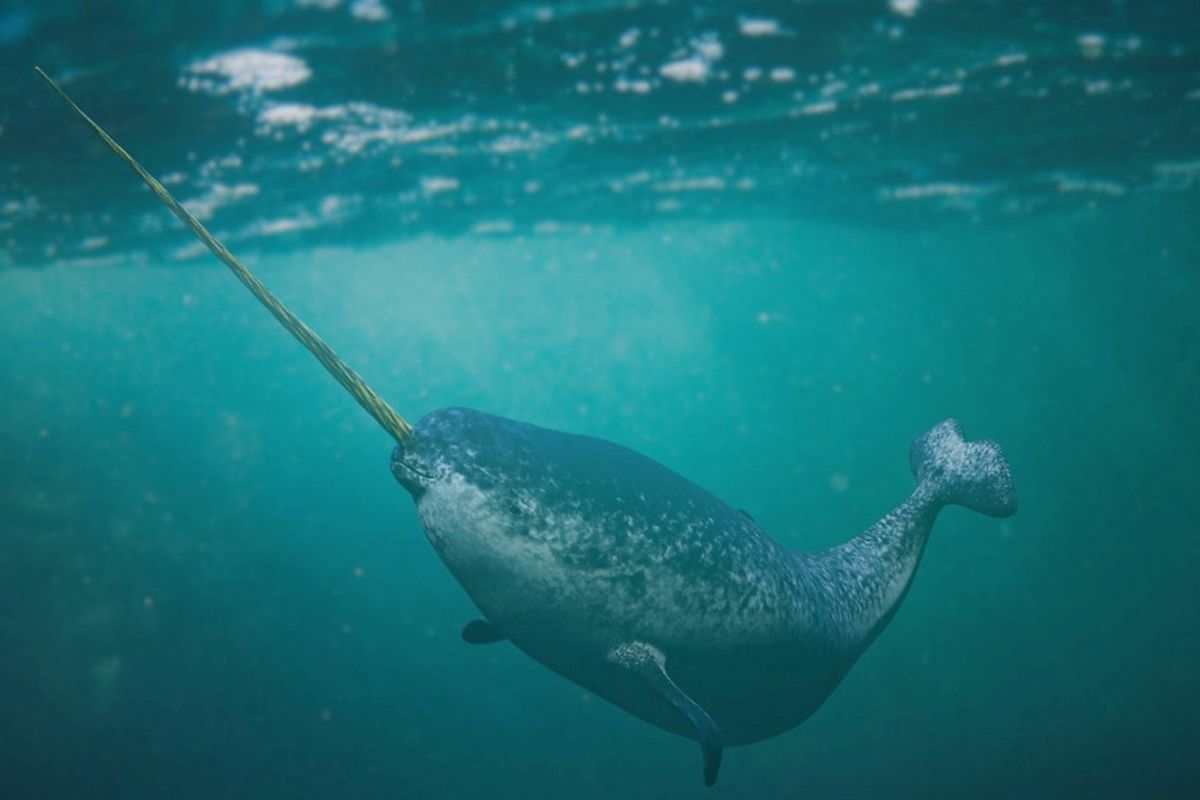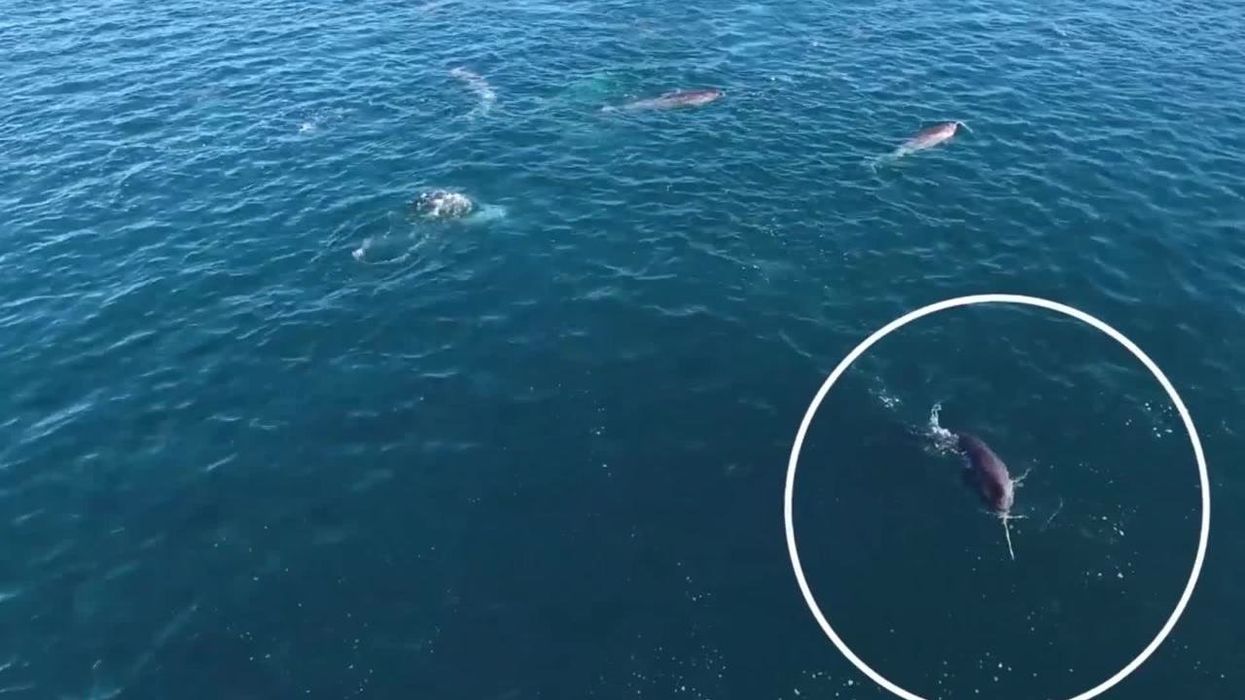Harriet Brewis
Jun 24, 2025
Narwhal caught on film stunning fish with tusk
content.jwplatform.com
Narwhals are among the most elusive creatures in the ocean, with their long, spiralling tusks giving them an almost mythological quality.
And whilst many people would pay good money to see these unicorns of the sea in the flesh, they are notably absent from the world’s aquariums.
The reason for this is both dark and mysterious, since there have only been two attempts to keep the toothed whales in captivity.
Both of these ended in tragedy and the general acceptance that narwhals simply don’t belong in our sealife centres.
The legendary porpoises, which are related to belugas and orcas, are found in Arctic coastal waters and rivers.
They have two teeth and, in males, the more prominent of these grows into the swordlike tusk which can be up to 10 feet long, according to National Geographic.

Back in 1969, Coney Island’s New York Aquarium becoming the first-ever centre to put a narwhal on display.
According to IFL Science, the aquarium became home to a young calf called Umiak, whose name referred to the canoe used to hunt the species in the High Arctic.
It was captured by members of the Inuit community who said that it followed their canoe back to camp after they killed its mother for meat.
Umiak was put in a tank alongside a female “white whale” (most likely a beluga), who acted as its stepmother.
And although staff reportedly fed vast quantities of milk mixed with chopped clams to keep it happy, they weren’t able to keep it healthy.
Less than a year after Umiak arrived at the centre, the orphaned narwhal died of pneumonia, as reported by The New York Times at the time.
Still, the animal’s swift and tragic demise didn’t stop Canada’s Vancouver Aquarium from attempting the same feat in 1970.
The aquarium had been gearing up to host a narwhal since 1968, when its director, Murray Newman, hoped that bringing narwhals to the city could generate interest in the species and help with its conservation, IFL Science reports.
After two unsuccessful attempts to capture one of the whales themselves, Newman and his team were forced to buy a young male from a community of Inuit hunters based in Grise Fiord on Canada’s Ellesmere Island.

The animal was reportedly called Keela Luguk – a phonetic spelling of the word “qilalugaq”, which means “narwhal” in some Inuktitut dialects.
Within a week of Keela Luguk’s arrival at Vancouver Aquarium in August 1970, the centre had caught two female narwhals and three calves, which were then added to his tank.
However, in less than a month, the three calves had died. And by November, the two females were also gone.
As public outrage mounted, the mayor of Vancouver himself called for Keela Luguk to be returned to the wild.
But Newman would not succumb to their pressure and, eventually, on 26 December that same year, the young whale was reported to have died too.
It’s not known exactly why the narwhals fared so dismally in captivity, particularly given that the species’s closest relative, the beluga, can survive a number of years, or even decades, in aquarium facilities.
However, the porpoises are known to be exceptionally sensitive animals, with studies finding that they are so affected by human-made noises that even the sound of a ship sailing near their habitat is enough to radically impact their behaviour.
Fortunately, aquariums seem to have got the memo, and narwhals have largely been left to continue their lives as fabled enigmas of the sea.
Why not read...
- 'Methane-powered sea spiders' live on ocean floor in very unique way
- 'Alien' structure 'with stairs' discovered at the bottom of the sea
- Scientists discover creature 'beyond imagination' encased in amber
Sign up for our free Indy100 weekly newsletter
Have your say in our news democracy. Click the upvote icon at the top of the page to help raise this article through the indy100 rankings.
Top 100
The Conversation (0)













